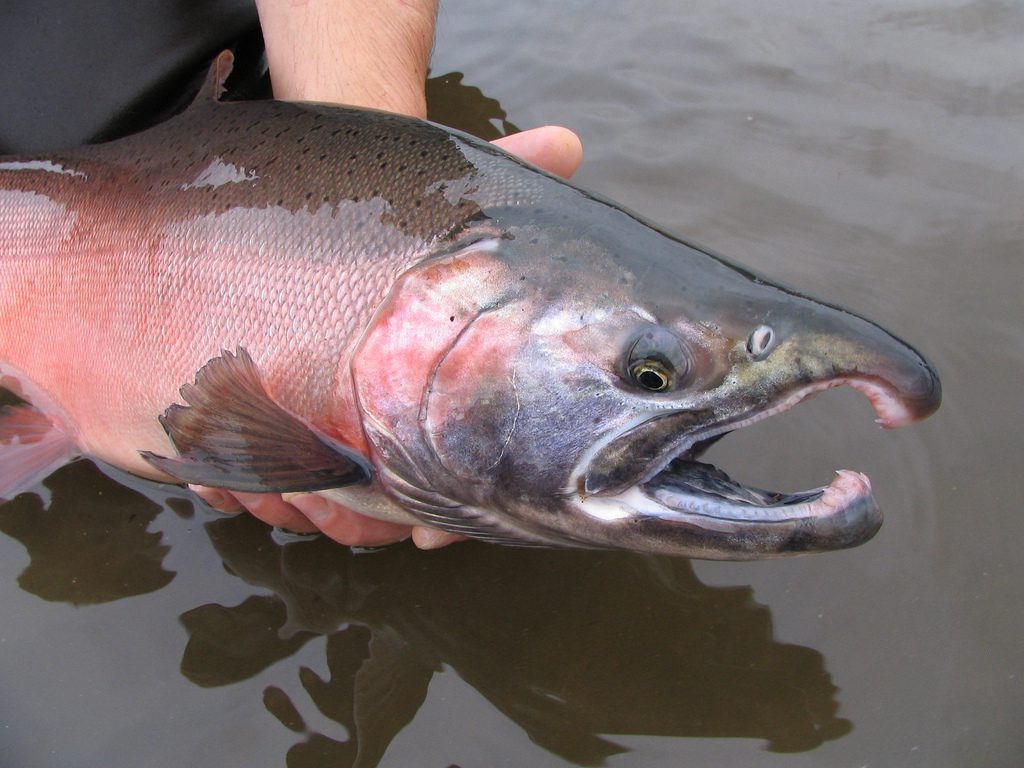A massive storm entering the far western edge of the Bering Sea on Friday could break an Alaska weather record, but forecasters say it’s unlikely residents in the Norton Sound region will experience anything too unusual.
Forecasters with the National Weather Service say the powerful storm could set a new low for atmospheric pressure recorded in Alaska. (The record in question is a low pressure of 925 millibars set in 1977 in Dutch Harbor; standard pressure at sea level is usually 1,000 millibars.) That low would mean hurricane-force winds will drive big waves—up to 50 feet—by the time the system moves into the far western edge of the Bering Sea near islands like Attu and Shemya on the fringe of the Aleutian Chain.

But with the storm about 1,000 miles away from the Norton Sound, the weather in western Alaska is likely to be less dramatic.
“If we were on ships, over there, we might be a little more concerned that, ‘oh, this is a record breaking storm!'” said Robert Murders, a forecaster with the National Weather Service in Nome.
“But since it’s so far away from us, it’s not really going to mean that much.”
Murders said the storm and its potentially record-breaking low atmospheric pressure may be making waves in the media—with articles appearing on news websites throughout the country—but he said the storm and any records it may break are just that: records.
“Personally, it doesn’t mean much,” he said. “It’s something we can measure and say, ‘oh, this was a strong storm.’ But it’s still going to be windy, it’s still going to be rainy, or snowing. It doesn’t really make that much difference then.”
Murders said the storm will grow in intensity through Friday morning, causing severe weather for some western and central Aleutian communities. As a precautionary measure, the U.S. Coast Guard reports the harbor in St. Paul in the Pribilofs has already been closed. Preparing for the worst, the Coast Guard has also sent two helicopters to Unalaska/Dutch Harbor and is keeping a cutter on standby.
But the storm will stay in the far western edge of the Bering Sea, with only minor effects felt in Norton Sound.
“As we get into Saturday, we could see some gusts up to 30 miles an hour,” Murders said. “We’re going to see more clouds, and our biggest threat Saturday night and into Sunday morning is when we have our best chance of seeing some kind of precip, snow, rain … just a little more unsettled weather through the weekend, into about the middle of next week.”
By early next week, Murders said the weather in western Alaska may be choppy, with some minor coastal flooding eventually coming to the Bristol Bay and YK Delta, but the storm will then likely shift back toward Russia.
“Early Tuesday morning, [it] looks like for our area, Nome, Norton Sound, probably still some wind, cloudy obviously and maybe a chance for precip, but the low itself is moving back over toward Anadyr.”
Murders said the best way to avoid getting caught by even the most minor weather from the Bering Sea storm is to stay on top of the changing weather at the National Weather Service website.







